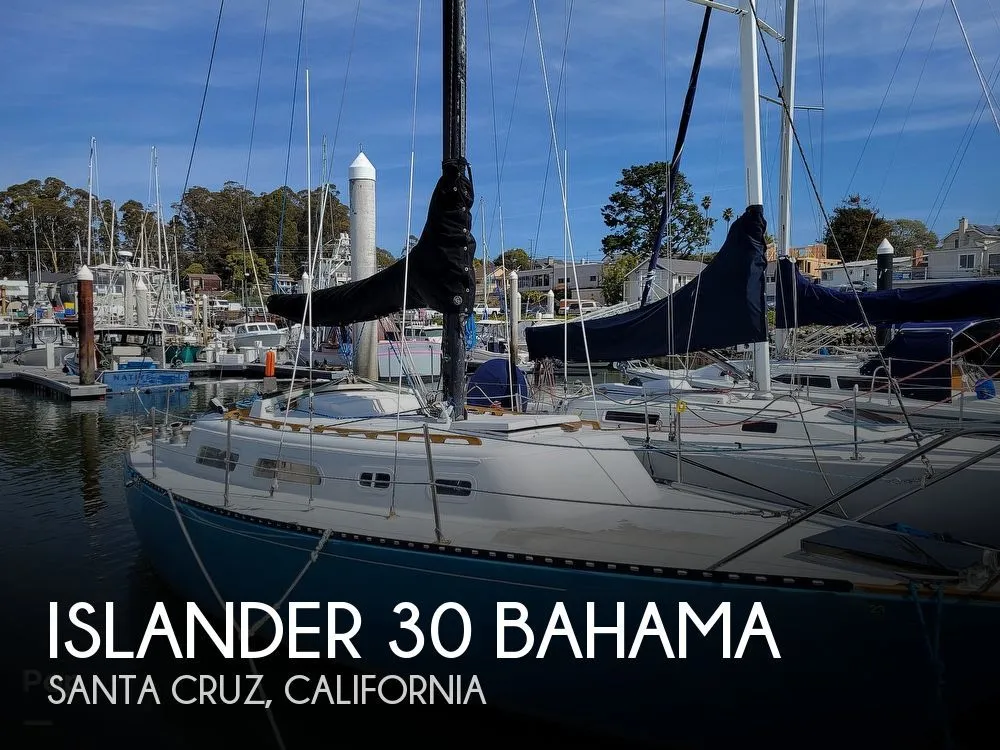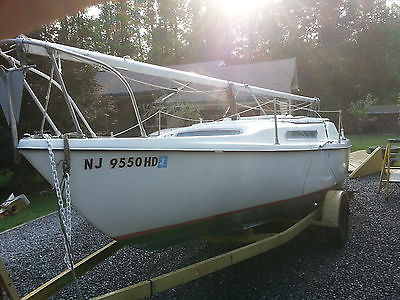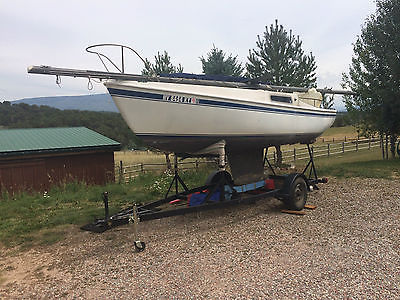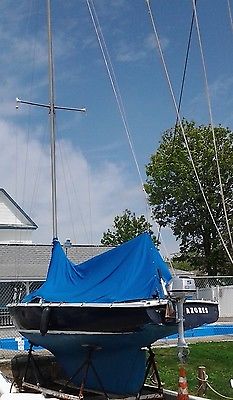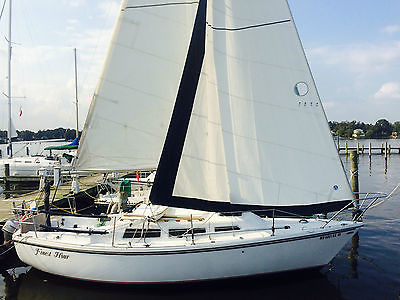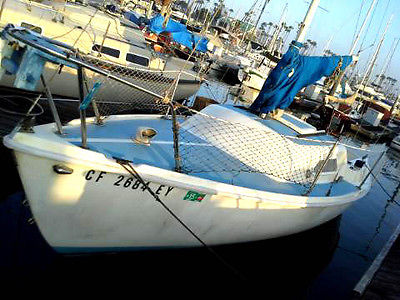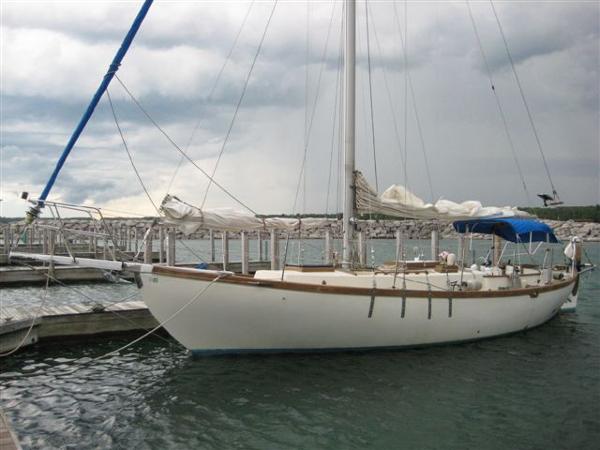$1
El Cajon, California
Category
-
Length
-
Posted Over 1 Month
We buy, sell, trade, tune-up, and repair all brands, years, sizes and lengths of outboard motors including: Johnson, Evinrude, Mercury, Sears, Wards, Mariner, British Seagull, SeaKing, Clinton, Elgin, Eska, Aero Marine, Gamefisher, Cruise'n Carry, Force, Ted Williams, and numerous others in addition to: Honda, Nissan, Suzuki, Tanaka, Tohatsu, Yamaha, etc. We also carry used propellers for most of the above brands (it is best to bring your old propeller or outboard with you for a perfect fit). We have some lower units, power tilt and trim units, various used electric starters and small electric trolling motors for sale (great for kids on a small boat on a lake).
Turn-around time, for carry-in repairs is about 5 business days or less.(depending on parts availability). A larger motor attached to your boat usually takes 1 to 2 days. We also rebuild electric and pull-starters for all motors and we have a huge selection of used outboard motors for sale ranging from 1hp to 250hp. All our motors have been serviced and ready to go.
We do remove and install large outboard motors of all sizes. Call Marty at 619 - 972 - 9998 to discuss your motor. If no answer, please leave a message and I will get back to you as soon as possible. Please repeat your phone number twice because sometimes it is not clear. Often we can help you fix your problem on the phone at no cost. (Please no E-mails or texts).
When you bring it in, we will give your outboard motor a compression and spark test, diagnose your engine, and tell you what it needs in repairs to get it back in good running condition. We will repair your motor at your request, answer your questions and make suggestions.
Most of our business is by recommendation of satisfied customers. We will do everything possible to make you one.
If we do not have the size or brand of outboard that you are looking for, ask us to put your name on our list and we will call you if and when such an outboard arrives.
------------------------------------- USEFUL TIPS & INFORMATION: ------------------------------
(1) All 2 stroke outboard engines made after 1963 require a 50:1 mixture (3 ounces of 2 stroke outboard motor oil per gallon of gas). The actual amount is 2.6 ounces per gallon (a little extra won't hurt, but less can cause severe damage to your engine). NOTE: NEVER use 100:1 as recommended by some manufacturers. It will cause your engine to lose compression and die prematurely. The only lubrication that your engine gets is from the oil that is mixed with the gas, therefore use 50:1 to be safe.
(2) Older outboards (pre 1963) require double the amount of oil 25:1 mixture (6 ounces per gallon), some require a 16:1 mixture
(8 ounces per gallon), and BRITISH SEAGULL engines require a 10:1 mixture (13 ounces per gallon).
(3) 4 stroke outboards do not need oil mixed with the gas. Make sure the crankcase is full of oil (check the dipstick). If by mistake you ran your 4 stroke with oil mixed with gas do not be concerned. It's OK.
(4) Always carry a minimum amount of tools like screwdrivers (blade and Phillips head), socket set including a spark plug socket, combination wrenches, vice grips, pliers, fire extinguisher, drift or punch to drive out a broken shear pin, a can of WD - 40, and a spray can of carburetor cleaner for starting emergencies, and a few extra new spark plugs (pre-gapped) in case yours become fouled, a new gas filter if your gas line has one, a tire pressure gauge, a long magnet and (extra-long) forceps (in case you drop a nut or a bolt), and a small flashlight. AVOID USING STARTER FLUID because it contains ether (bad for outboards). Also carry a pair of extra shear pins and cotter pins (for most outboards less than 35hp). And also a few small hose clamps to tighten a loose or leaking fuel line (see tip #53 below).
(5) For small outboards under 40hp, keep the clamp handle screws greased so they will not freeze up from oxidation or salt.
(6) For all outboards that have remote steering, grease the steering cable often if you go out in salt water to prevent the cable from "seizing up" and causing a costly repair.
(7) For all outboards, starting it several times a year keeps everything "limber".
(8) For all outboards, flushing your outboard in fresh water for 5 minutes after each saltwater use will prevent costly cooling system repairs. NOTE: Do not flush your motor in saltwater. Use a barrel, or a garden hose hooked up to outboard "earmuffs" or any other device made for your motor.
(9) If you carry your small outboard motor in the bed of a pick-up truck, always tie it down securely or it might break the tiller or shift handle by rolling.
(10) For all outboards, check your propeller for broken blades or chunks missing from any blade. Operating any outboard with uneven prop blades will cause vibration and damage to seals and other internal parts of the lower unit. Also it is best to carry a spare prop. (Approx. cost $50 for a used one)
.
(11) Spray a thin coat of WD 40 all around the powerhead of your outboard. It will not make your engine run better, but it will protect it from rust and salt deposits.
(12) For pull start outboards, check the entire pull cord for signs of wear. You wouldn't want to break a pull cord when you are out fishing.
(13) For electric start outboards, always carry 2 fully charged batteries in case one battery loses its charge.
(14) For small (tiller steering) outboards up to 35hp, attach a short chain, cable or heavy rope (one end attached to your outboard's clamp section, and the other end attached to the transom of your boat) as a safety to prevent your motor from falling overboard.
(15) For all outboards, in the event that you remove the top cowling to check your engine, put the cowling down away from the edge of the boat since any wave might send the cowling to the bottom of the ocean or lake. It will be difficult to locate a replacement.
(16) For all outboards, most engine failure is a result of overheating. Always check the temp. gauge (if you have one) or by watching the "pisser". If you see steam coming out, shut the engine to avoid costly damage. Check the bottom of the lower unit to see if you picked up some vegetation, or a plastic bag which may be blocking your water intake. If you do not find anything, you may have a bad impeller or a bad water-pump housing. The best thing to do is, try (if possible) to get towed back by any good natured person in the area, or call "VESSEL ASSIST". If you do not have "Vessel Assist Insurance", it will be quite costly. To avoid all of the above, it is best to change your impeller every 2 years or sooner. Whether you use your outboard frequently, occasionally, or just once in 2 years, it is time more than wear that ruins the impeller.
(17) If you own a boat (any kind), always remember to replace the drain plug in the stern (rear) before you go out, or the boat will slowly fill with water. This event happens to everyone at some time. It is best to make a check list and review it before you launch. (Also keep a spare drain plug near the drain-hole in your boat in case the original one gets "lost").
(18) For portable outboards, it is best (if possible) to mount the motor on land before you launch in the ocean, because any wave can cause you to drop your motor while you are mounting it.
(19) For outboards with an integral gas tank (one that is built-in to your engine), always carry extra fuel and a FUNNEL, or much of the extra gas will be lost when pouring to re-fill your integral tank.
(20) For pull-start outboards and some bigger electric starting engines, you should have a separate emergency starter rope with a handle in case your starter spring fails, or the rope tears, or the electric starter or battery fails.
(21) For all outboards, it is wise to remove the propeller after several times of use, in order to remove the fishing line that sometimes collects there. This fishing line can cut through the prop seal and cause the lower unit to leak oil and take in water. (a costly repair).
(22) Gasoline should be fresh (not more than 6 months old). If you choose to keep it longer, add the correct amount of STABIL.
(23) For all trailered boats, (large and small) you should check the transom of your boat for stress cracks (caused by the motor bouncing because of bumps in the road). To prevent such cracks you should get a TRANSOM SAVER which takes the weight off your boat's transom and transfers it to the trailer. (It costs about $75, and can save you thousands).
(24) For all outboards, check the lower unit gear oil. It should be dark brown or black in color. Water or coffee-n-cream color in the oil indicates a lower unit seal problem. Smelly/stinky oil is usually OK as long as the color is good. The gear oil should be changed annually.
(25) For outboards up to 35hp, if you cannot get the boat to plane, try adjusting the tilt pin. If the boat still rides with its "nose" high in the air, it is probably because you have too much weight in the rear or (you may possibly have the wrong length lower unit). One remedy is to install a "WHALE TAIL" on the cavitation plate of your outboard to cause a greater lift in the rear. (It costs about $50).
(26) For all boat trailers, you should get a BEARING BUDDY for each wheel. Its purpose is to keep the whole hub and wheel bearings greased and to prevent any water from entering the bearing zone when you back into the water. Keep it full of grease (with a grease gun). Without BEARING BUDDYS you can expect the bearings to seize-up sometime when you are trailering. You might snap an axle, lose control of your trailer, drop your boat off the trailer onto the road, or worse. BEARING BUDDYS are inexpensive and easy to put on. They can be found at any boat shop or automotive parts place.
(27) For outboard engines that are partially submerged in saltwater for 3 months or longer, you can expect the lower unit's aluminum housing to begin disintegrating (dissolving). If you cannot keep the lower unit out of the saltwater, you should attach some zinc anodes to the cavitation plate. They will help save your lower unit. Cost of anodes $5 - $55 at any boat shop.
(28) For all do-it-yourselfers, it is best to put grease or NEVER SEIZE on all the bolts that you remove and replace, to prevent rust and salt build-up on those bolts.
(29) For all outboards, service your engine regularly. To do so not only prevents problems, but allows you or your mechanic to grease all the bolts that are removed and replaced so that those bolts will come out easily "without breaking" in the future.
(30) For electric start outboards, at the first sign of starter trouble, get the starter serviced before you take the boat out fishing. Be happy that it gave you a warning.
(31) It would be wise to carry an extra fuel tank "quick connector" fitting that "snaps" into your engine fuel fitting. The "O" ring that they all have sometimes goes bad causing the engine to suck too much air instead of fuel. The engine will then stall or run poorly. Cost about $7 - $20.
(32) We sell many large 2 stroke outboards to unfortunate people who relied on their automatic oil feeders known as "VRO". We suggest that you disconnect your VRO and add oil to your gas the old fashioned way. Your engine can become totally ruined within seconds when your VRO fails. Don't take our word for this suggestion. Ask other outboard mechanics for their opinions.
.
(33) It is suggested that you do not go full throttle on any outboard, because it over-stresses your motor. You should use about 95% of your maximum power. This can be accomplished by putting in a "stop" near the end of your throttle or just remembering to back off a little. This should save gas, wear and tear to your engine, thus making it last longer. (It is similar to driving your car with the gas pedal to the floor)
(34) For outboards that use portable gasoline tanks (2-12 gallons), it is wise to use a good plastic or aluminum gas tank. (An aluminum tank is hard to find). The reason for using aluminum or plastic is because they will never rust. A rusty tank will probably clog your gas filter or carburetor when the rust-dust gets there. You should keep the plastic tank away from the direct rays of the sun which will cause it to become brittle and crack. You should replace your plastic gas tank after a few years as needed.
(35) For all outboards, never store your outboard motor upside down or it may seize from the water residue that will drain into the powerhead causing the internal parts to rust. It is best to store it vertically.
(36) For small outboards (carrying type), it is wise to run your motor out of fuel before you take it off your boat. The reason is to prevent the gas that remains in the carburetor from spilling onto the carpet in your car or trunk when you lie the motor down.
(37) For outboards that are bolted to the transom of a fiberglass boat, make sure that MARINE silicone is used to coat the mounting bolts and to fill the mounting bolt holes. Apply the silicone liberally. This will prevent water from getting into the bolt holes and save your transom from rotting. Behind the fiberglass is wood. The wood will rot over time if water gets to it.
(38) For all outboards, never run your engine "dry" (without water) or it will seriously damage your impeller within 1 minute. You might not realize this, and the next time you go out boating or fishing your engine may overheat.
(39) For all trailerable boats, it is wise to attach a safety chain from the "pulling-eye" at the front of your boat to the area near the winch. If your pulling strap suddenly breaks, the safety chain will stop your boat from coming off the trailer in transit.
(40) For all outboards, when you change the gear oil, be certain that when you replace the oil screws, that each of the 2 screws has a plastic (or composition) flat washer to prevent oil from leaking out and water from leaking in. Sometimes the washers get stuck in the "screw well". That is OK. Replace the screws and tighten securely. NOTE: If the flat washer is missing, DO NOT replace with an "O" ring. It will surely fail.
(41) For all outboards, it is wise to replace the lower oil drain screw with a magnetic elongated drain screw. It will catch any small loose steel particles that break off within the gearcase, warning you that a problem may be developing there. Approx. cost for a magnetic oil screw $8.00 at any boat shop.
(42) For all outboards, when changing gears from NEUTRAL to FORWARD, or from NEUTRAL to REVERSE, first lower your speed to minimum. Do not "ease" the shifter into place. Be decisive! Slowly shifting into forward or reverse will cause the gears to grind and lead to costly repairs.
(43) For all sailboats with outboard motors, be certain that your outboard motor does not pick-up out of the water when the sailboat rocks. One remedy is to lower the engine mount (if possible), or get an outboard motor with a longer shaft, or else the impeller may become damaged and fail, causing your outboard to overheat.
(44) For 2 stroke outboards, it is wise to add outboard motor oil at the same time that you purchase gas. Waiting until you get home increases the chance that you will forget to add oil. Running your outboard without oil can destroy your engine within 15 seconds (a very costly error).
(45) For small 4 stroke engines, when transporting your outboard off the boat or when storing it, it is best to keep it in a vertical position. If you must lie it down, make sure that it lies according to the manufacturer's instructions. Lying it down on the wrong side will cause the engine oil to seep out. Always check the oil level with the dipstick before you start any 4 stroke outboard. If your engine oil level is low, you can add any standard automotive oil.
(46) To tell if a boat leaks without taking it to a lake or ocean, use a garden hose to fill the bottom of the boat with water. If the water leaks out of the bottom, the boat surely has a leak and it may show you exactly where to repair it.
(47) Be smart: DO NOT LEND YOUR OUTBOARD MOTOR OR MOTORBOAT TO ANYONE. If you do, don't be surprised by the motor problems you will have have when it is returned.
(48) For uncovered boats left outside between usages, remove the drain plug so your boat will not fill up with rainwater. Check the drain hole periodically to remove leaves, dirt, etc. Be sure to replace the drain plug before you go boating.
(49) For all boats that are trailered, it is unwise to tow even a short distance without one or 2 spare tires. If you get a flat tire and have no spare, you can expect a mostly ruined fishing or boating day. I recommend 2 spare tires because in the event that you use your spare because of a flat tire, you no longer have a spare. NOTE: Many people prevent weathering of their spares by carrying them in their trunk.
(50) For all trailer users, it is wise to have a 12 volt tire inflator that plugs into your cigarette lighter or attaches to your car battery. If your trailer tires are low they could possibly blow-out or become flat. A 12 volt tire inflator will take a few minutes to restore the required air pressure etched on the tire by the manufacturer. Cost: $15-$40.
(51) It is wise to make a check- list of all the things you will need when you go boating or fishing so you will not forget anything. Write it on thick stiff paper so it will not crumble and can be used repeatedly, and you can add to the list as needed.
(52) For all outboards, if your motor runs in neutral but it will not move in forward or reverse, it might have broken shear pin, or a faulty propeller, or a loose shift rod. Do not assume that the gears are bad until you eliminate those 3 items.
(53) For all outboards, check all gasoline hoses. Today's gasoline contains alcohol which hardens and /or deteriorates most old hoses. They rot from the inside and cause problems with your carburetor and /or sometimes cause a dangerous gas leak and loss of power. It would be wise to change the hoses annually to prevent problems. The cost of hoses is approx. $2-$10 at any automotive shop. Bring a sample with you. Make sure that the new hoses are alcohol resistant.
(54) For all sailboats that are in slips and use outboard motors mounted onto an outside kicker bracket. When mounting or removing your outboard it is wise to maneuver your boat so that the outboard motor is over the floating dock. This can be accomplished by backing up your sailboat so that the motor is not directly above water, but above the walkway. The purpose is to prevent the outboard from falling out of your hands when mounting or dismounting it. Many people have dropped their outboards into the water by trying to mount them while leaning over the stern.
(55) For all trailers, make sure that the ball is securely fastened to the coupler before pulling the trailer. Sometimes the coupler "looks" as though it is fastened, but it is not. The trailer may become undone and cause havoc on the road. It only takes a few seconds to carefully check it before you tow. COST: zero, SAVINGS: perhaps a life.
(56) For all trailerable boats, always check your trailer lights. The cops are out there with spare tickets anxiously waiting to give them out. It is also safer if all your lights are working. Backing your trailer into a lake or saltwater will often ruin your trailer lights. The cost of repairing the lights is considerably less than the cost of a ticket and a loss of time at the courthouse. P.S. You can also get a ticket if your safety chain is not properly attached.
(57) For all outboards it is wise to buy or make any device that will stop or slow down a thief who would like to steal your engine. If it takes a thief more than I minute to remove your engine, he will probably go elsewhere. It is best if everyone made their own device so that the thief will not be able to figure out a system for fast removal.
(58) For all outboards, always carry a metal scraper, or stainless steel wool, or at least some emery cloth, or sandpaper. Sometimes your motor will not start because the battery cable terminals are dirty or corroded, or other wire terminals or ground connections may be corroded. The emery cloth or sandpaper may restore a clean connection to wherever it is needed.
(59) For all outboards sitting idle for long periods of time, check the wires (not the spark plug wires) by shaking them with your fingers. If the insulation is brittle and crumbles you must replace the wires before starting your engine because they might short-out and cause costly damage to your electrical components. They can also cause a fire under the hood. This happens mostly to old Mercury outboards, but it can happen to any brand.
(60) If you made a checklist, add this to it: Swing or crank the trailer jack wheel up and out of the way after attaching your hitch, or it might get damaged or break off when pulling the boat for as little as a few inches.
(61) For small outboards (up to 25hp), if you notice that your outboard is not "pissing" water, don't panic. It might be a clogged "pee" hole or a clogged intake. Check if the engine is HOT. If it IS HOT shut it down immediately. If it is NOT HOT, push a wire (the thickness of a paper clip) into the "pee" hole. This might open the clogged passage. Also check the intake screen (at the bottom of the engine near the propeller) for debris.
(62) For all outboards, if you remove your propeller (for any reason), before you put it back on, it is wise to grease the propeller shaft to prevent the propeller from "freezing" to the propeller shaft (because of salt and/or rust). If the propeller is already " frozen" and it will not come off (after you tried tapping it with a hammer and cussing), you may have to cut it off with an electric hand grinder or something similar. Sometimes a propane torch will burn out the rubber insert that holds the propeller together. Neither method is pleasant. A little grease now can save you a lot of time and money in the future. NOTE: Do not hit the propeller hard with a hammer or you might bend the propeller shaft which will cause costly internal lower unit damage when you go boating.
(63) For all boat owners, it is advisable to purchase liability insurance for your vessel because you are responsible for any damage or injury that is caused by your boat or its wake.
(64) For most gas tanks (metal and plastic), do not fill to the top with gas. Give the gasoline room to expand during hot weather, or the pressure inside the tank may cause the gas to overflow, the tank to rupture, distort, or generate small cracks at its top etc. Sometimes the cracks may not be visible, but during the rainy season (unknown to you) water may seep into the tank through those cracks. You will not be able to start your engine if there is water in the gas.
(65) For all saltwater fishermen, it is wise to carry a thermos of HOT water or coffee in case you catch a sculpin and get stuck by its poisonous fins. Pouring HOT water on the injury will immediately neutralize the poison. Using cold water to stop the pain will make it worse. Ask your medical doctor.
(66) For all outboard motors, if your motor runs great with the hood off, but runs terrible with the hood on, you may have an exhaust leak that is fouling your carburetor. Consult your mechanic for a remedy.
(67) For all outboards, if you hear electrical arcing, pulsating or buzzing noises when it is running, you may have an electrical problem. A good way to investigate the problem is to run the outboard at night where it is dark and look below the hood. If you see sparks, clean and tighten the connections or change the part that is sparking as soon as possible because the sparks can start a fire.
(68) For all boat trailers, if you notice that your boat is sagging to one side, the trailer may have a broken leaf in its set of springs. If so, get it fixed promptly before another leaf breaks because of the added stress.
(69) For all outboards, check the water intake near the bottom of your motor for a broken or "plugged-up" screen. Clean or replace if broken.
(70) For all boat, car, and truck owners, if you have a build-up of acid corrosion on your battery post, pour very hot water onto it. The corrosion will immediately vanish.
(71) For outboards over 10 years old that have foam-rubber glued to the inside of the hood by the manufacturer, be sure to REMOVE ALL OF IT by any means because the foam will flake-off and plug up your carburetor. DO IT NOW!!! Also remove any dust, or leaves because your carburetor will suck any loose material into it like a vacuum cleaner.
(72) For all outboards, it is wise to start and run your outboard at home for 10 minutes before you go out boating or fishing. Sometimes your motor will not start. You do not want to have trouble starting at the lake or ocean. It is best to deal with the problem on land. Be sure not to start it without water.
(73) For all boat trailers, you will need a jack and a lug-wrench that fits your trailer's lug nuts. If they are rusty you may need a length of steel pipe to give you more leverage with the lug wrench. (It also helps to spray W-40 on everything during removal).
(74) It is wise to often check the tire pressure in your spare tire because it may be very low. It can lose air, by just "sitting".
(75) To determine if your (questionable) boat battery is good, it will need a "load test". For an accurate reading, you should charge-up your battery for about 2-3 hrs. A load test takes about 10 seconds. Most auto parts shops will load test your battery for free.
(76) For all outboards, many of them take about 1-2 minutes to warm up. In that time your motor may stall, misfire, run-rough, etc. It may need more choke or less choke depending on how much gas is in the carburetor or carburetors (if you have more than one). Be sure that the "pump-up ball" is hard and the carburetor(s) is full of gas.
(77) For all boaters, you can expect that at some time in the future your outboard motor will not start or re-start while you are out fishing. If you can afford it, it is wise to carry an auxiliary motor, or mount one on the stern. It should be between 4 hp and 25 hp depending on the size of your boat. It can also be used to save gas when you are slow-trolling for fish.
(78) For all 2 stroke outboards, if you notice oil "leaking" near the foot of the motor, it is NORMAL because all the oil in the gas that went into the engine for lubrication must either "burn" or drip-out after the motor is shut down. It is wise to use an oil drip pan under the lower unit to prevent a stain on your driveway or elsewhere.
(79) For users of small boats that use outboards, to avoid painful blisters bring along a pair of leather gloves along with oars in case your motor won't start and you have to row.
NOTE: Most boaters are aware of the above suggestions, but not everyone. I hope that I may have saved someone the inconvenience of having a bad day on the water. If I think of any more tips, I will add them to the list. Perhaps you should make a copy of the tips as a reminder.
